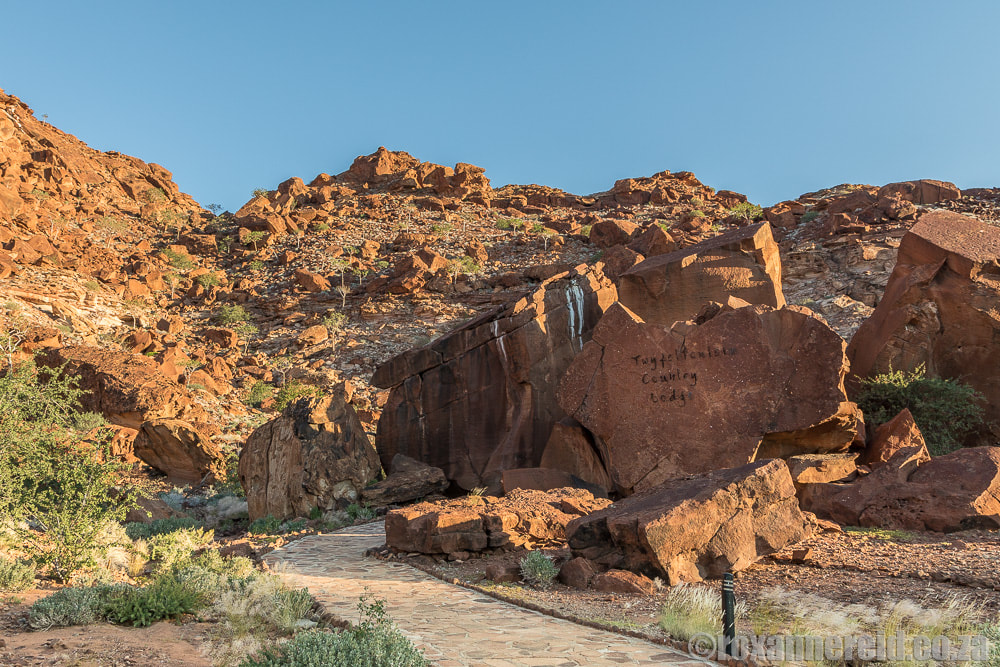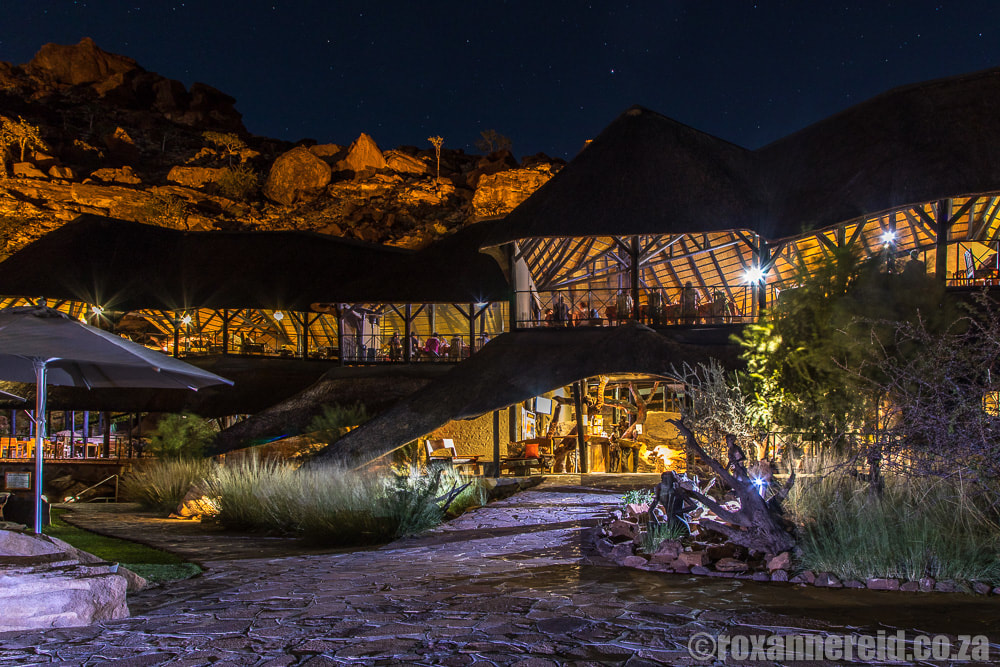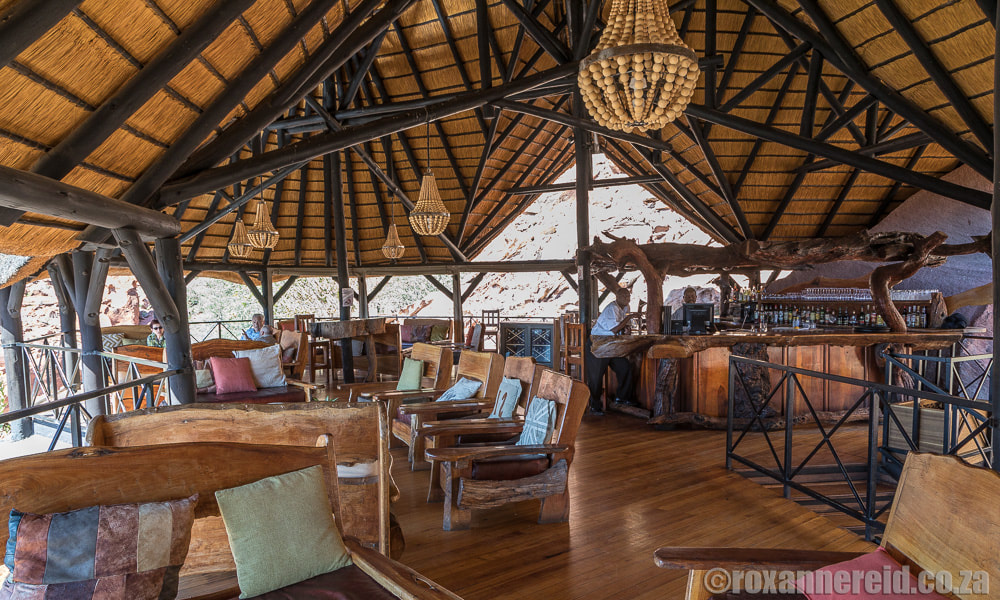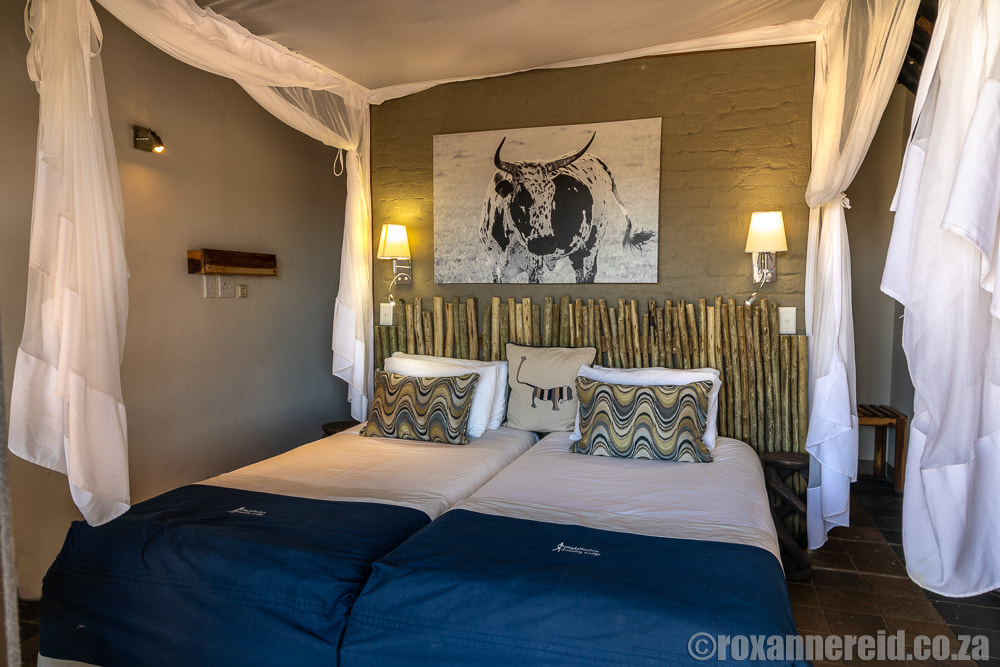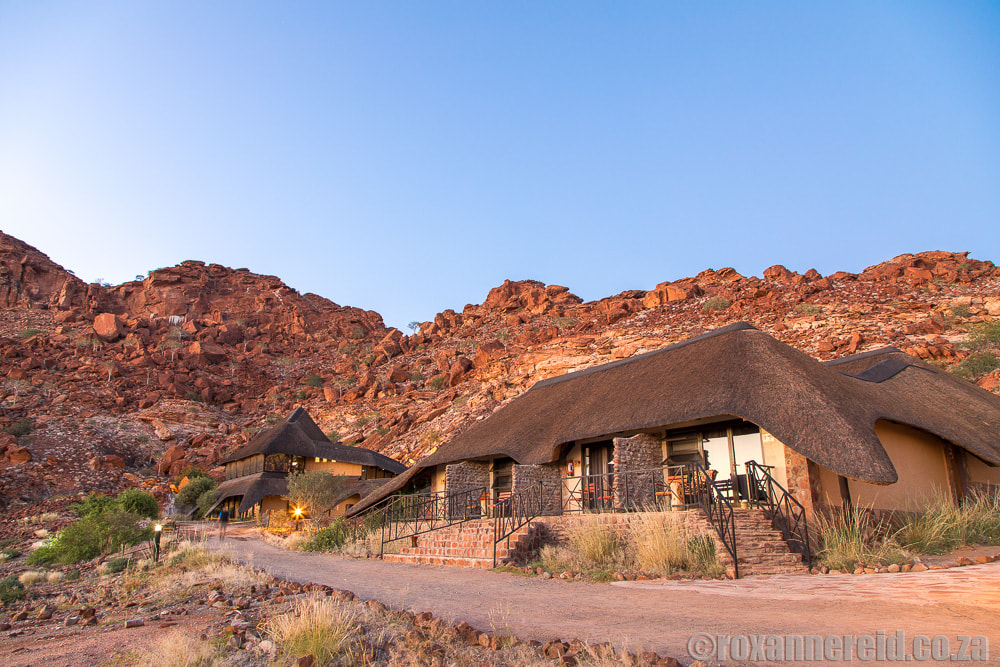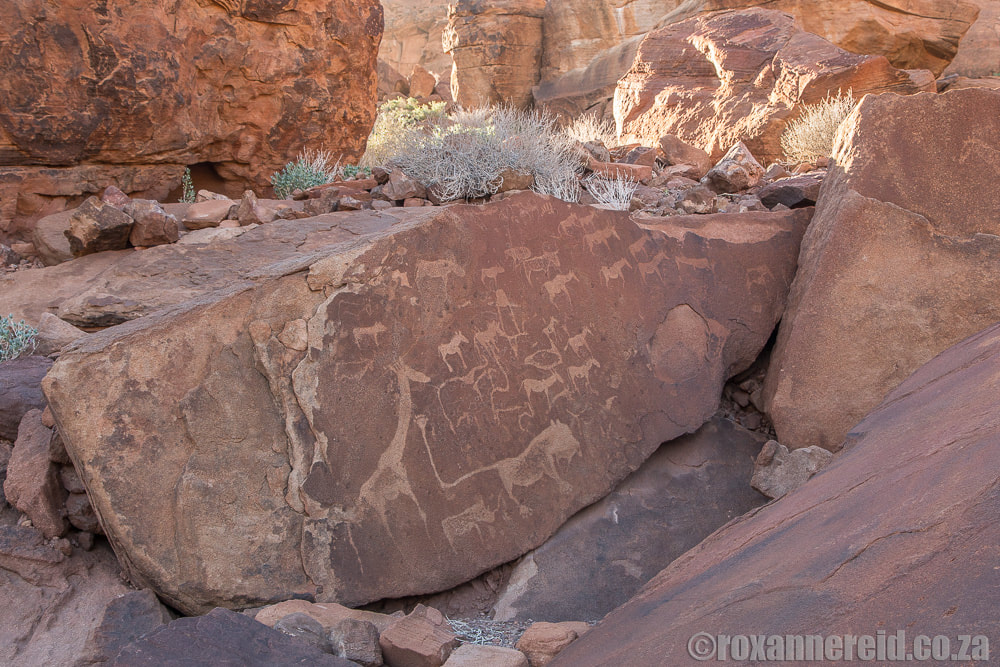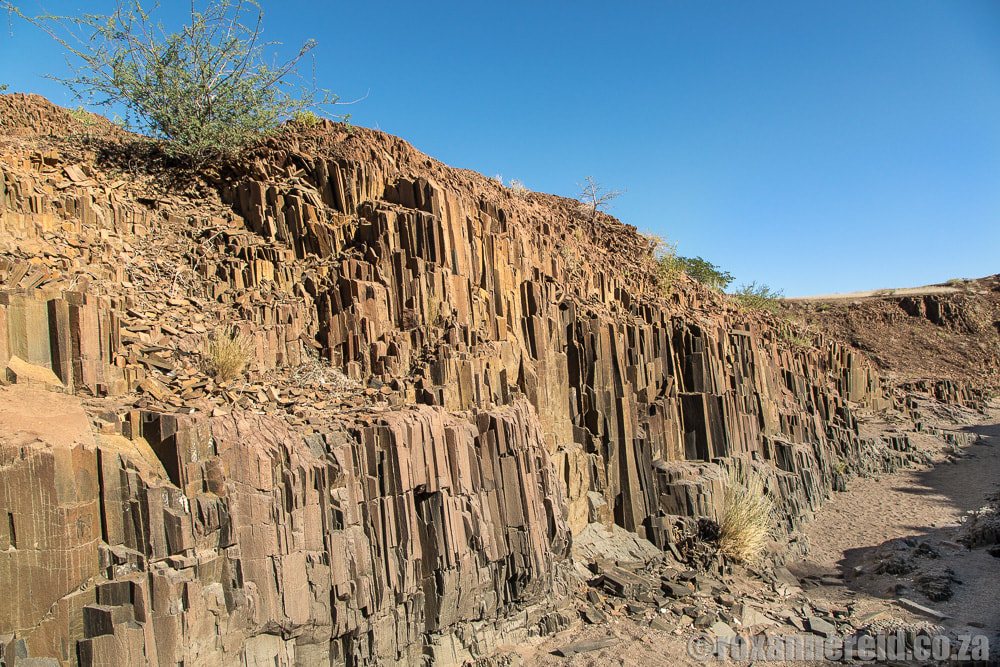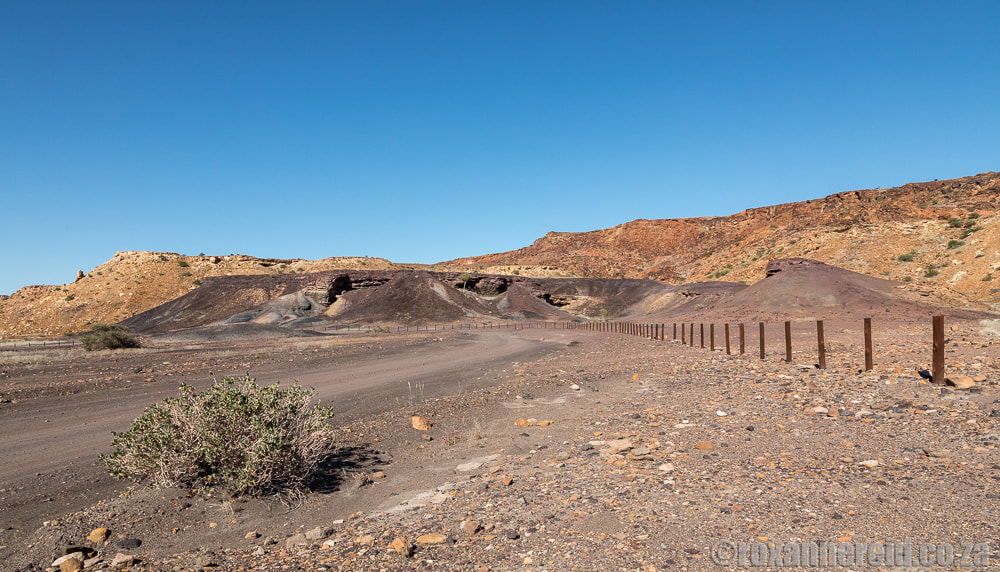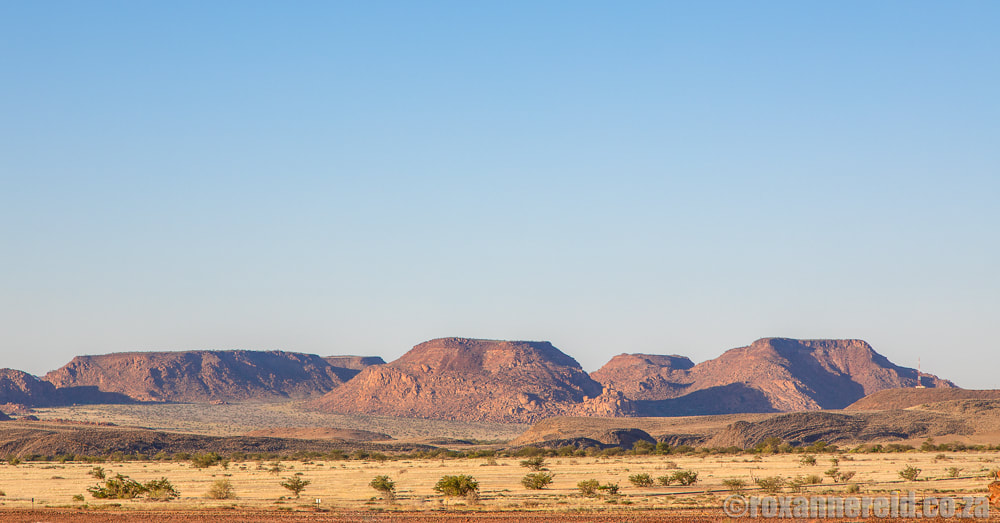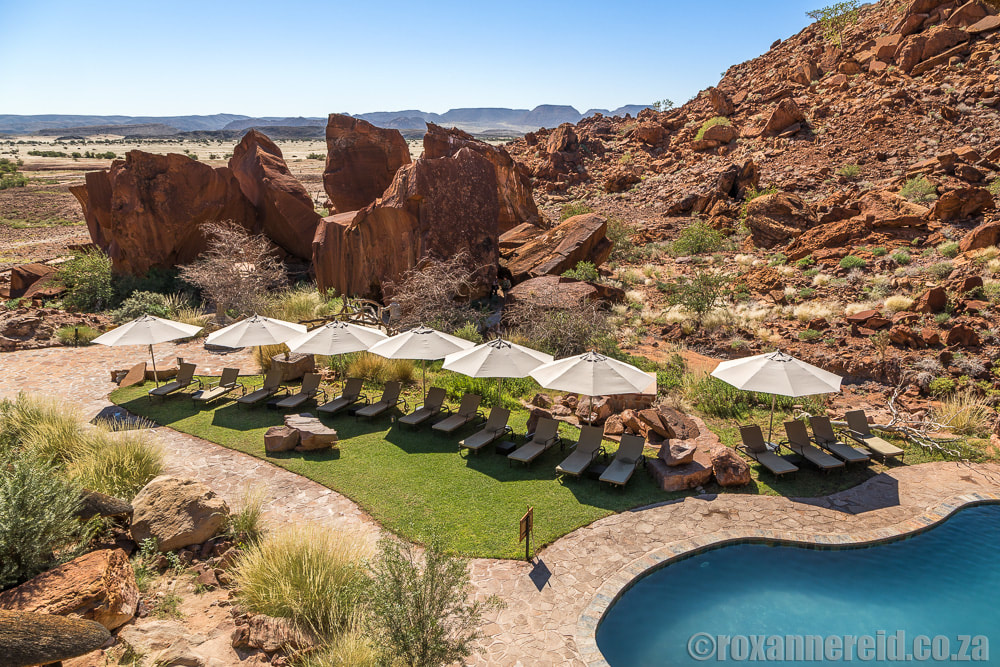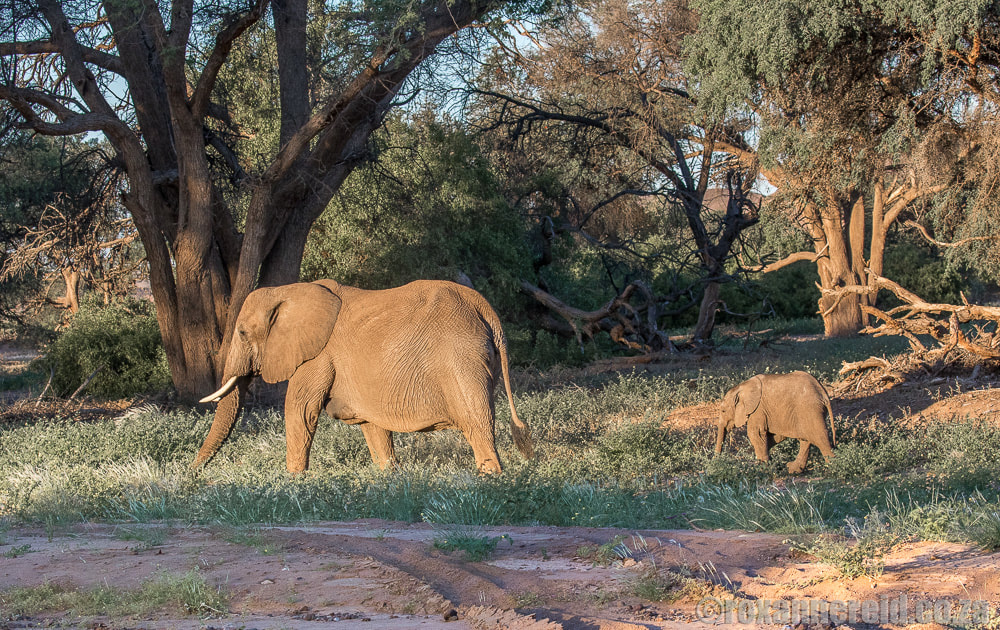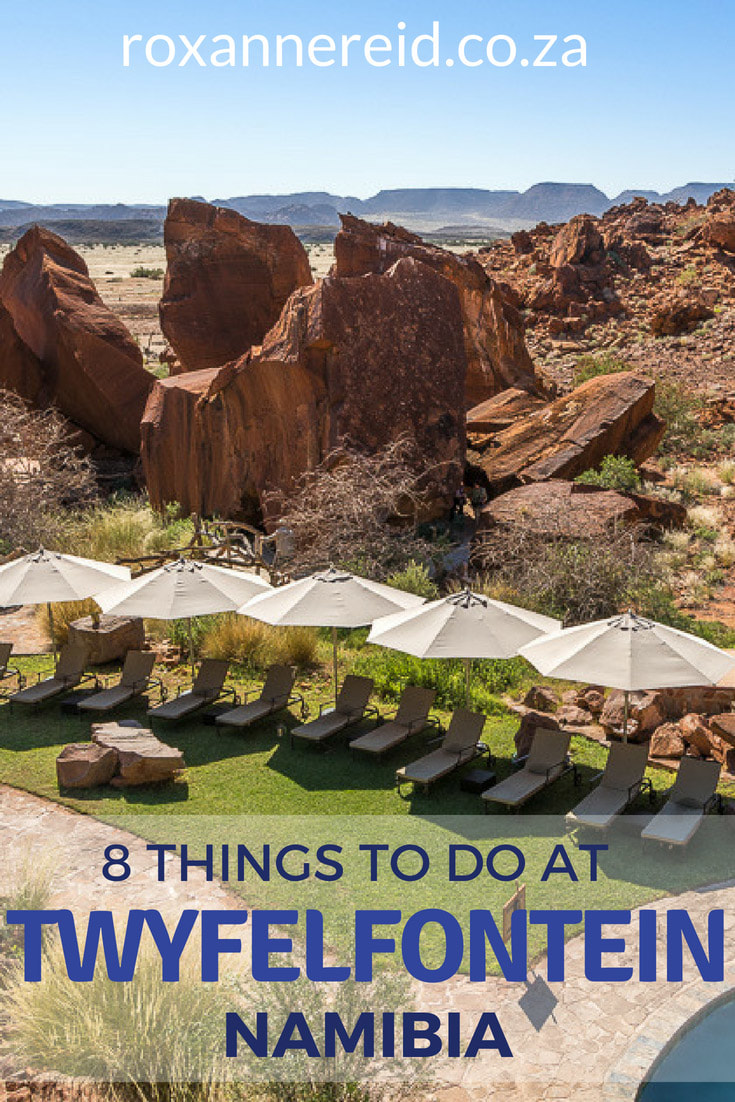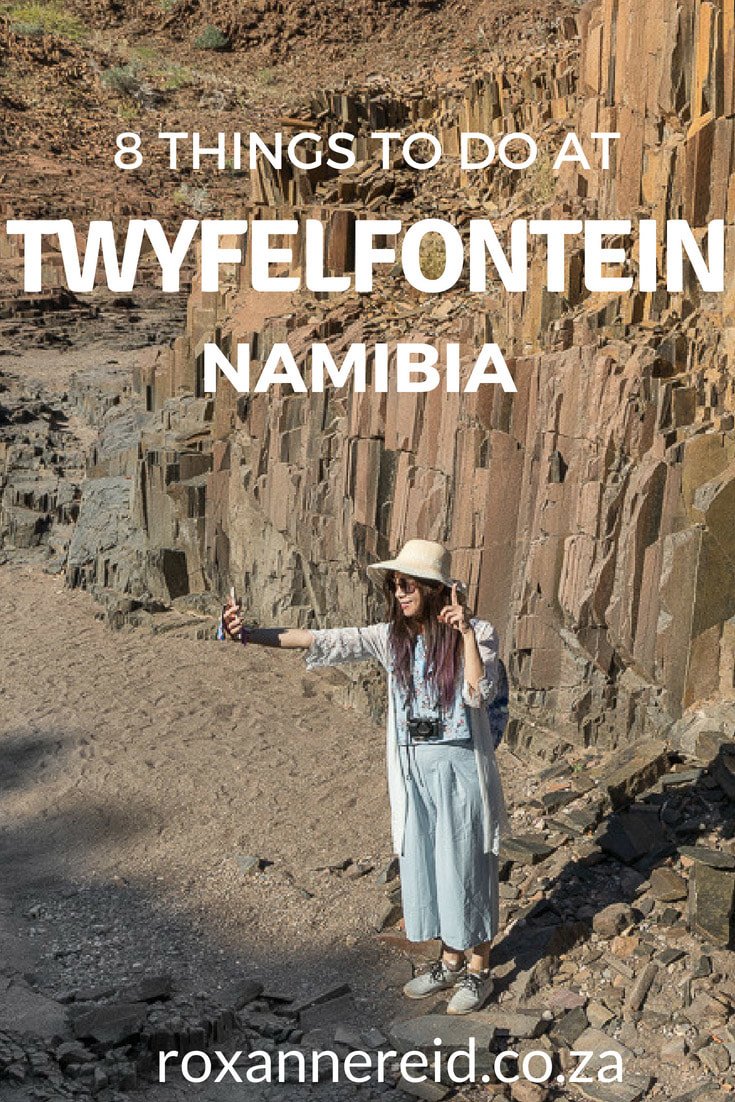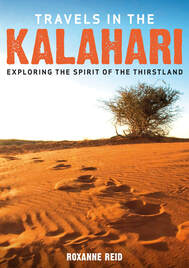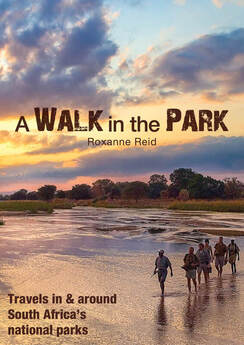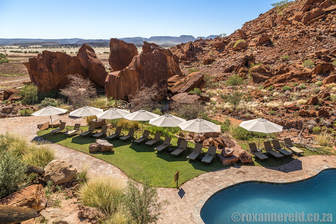
Late afternoon and the heat had ebbed. From the stoep of our room at Twyfelfontein Country Lodge we watched the sun burnish the rocks, silky grasses ripple on the plains and distant mountains march along the horizon. A mountain chat chirped and a lizard came to visit. It was a reminder why Namibia is such a rewarding destination. Here are 8 reasons to visit Twyfelfontein.
You’ll love those rocks at dawn and dusk, when they’re at their most attractive, but hate them in the middle of the day when they seem to draw and hold the heat. It can get to 55 degrees here in summer and even when we were there in late May it reached a toasty 30 degrees one day.
After dinner, the staff gave a concert of enthusiastic singing, with a little swaying and stomping thrown in for good measure. It sent us to bed with smiles on our faces.
At breakfast, you can help yourself to another buffet that includes fresh fruit, pastries, cold meats and cheeses, as well as the usual bacon and sausage. Order eggs as you like them from the hot grill and you’ll have enough fuel to last till dinner time. If not, never fear, people come from far and wide to see the sights around the lodge, so there’s always plenty of food at lunchtime too.
Do you love being active and seeing new sights, or do you prefer to laze your way through the day? No matter what gets you excited, you’ll be spoilt for choice here.
1. Discover a Petrified Forest
On the way from Khorixas, stop to see the Petrified Forest about 50km northeast of Twyfelfontein. No, it’s not a standing forest, but a collection of fossilised trees lying flat. You can try to do the walk of about 800m on your own, but in my opinion it’s worth paying a professional guide to enrich your experience.
Beverly Afrikaner explained how the trees were flushed down from Central Africa in a flood 280 million years ago. When they settled, they were covered in mud, and minerals like iron oxide, silica and magnesium penetrated to turn them to stone. The site was discovered by locals in the 1940s after they were exposed by erosion.
The first one we saw was about 1.2m diameter and 10m long, fully exposed on the surface. ‘The petrified trees are twice as heavy as normal stone,’ said Beverly, dumping a small broken-off hunk of it in our hand to prove her point.
One of the petrified trunks is hollow, which you can hear clearly when you knock on it. ‘Oxygen must have penetrated to rot the inside before the outside became petrified,’ she explained. On some of the trees you can see bark preserved in stone.
Your guide will also point out various plants of interest, such as that Damaraland special, the welwitschia. You’ll learn that white-barked commiphora is used by the Damara for woodcrafts, brown-barked commiphora by the Himba for perfume, and that euphorbia (milkbush) has a poisonous latex that Bushmen used on their arrow tips to paralyse an animal. Once the animal collapsed, the hunters would go closer and kill it with their spears, then cook the meat twice to get rid of the effect of the poison.
2. Explore the Twyfelfontein engravings
A 4-5km drive from the lodge takes you to Twyfelfontein, where your entrance fee pays for a professional guide to take you around this UNESCO World Heritage Site. Sylvia Thanises told us there are about 43 000 engravings in Namibia. The ones here are between 2000 and 6000 years old, from the Late Stone Age.
They’re named after a spring discovered by farmer David Levin in 1946. He was looking for water but wasn’t sure if he would find it – hence the name (twyfel is Afrikaans for doubtful or uncertain). You can still see the ruins of his farmhouse. The Damara name is /ui-//aes, which means water among rocks.
The artists used white quartz to engrave the soft sandstone, creating one of the largest collections of rock petroglyphs in Africa – more than 5000 individual depictions. German Rheinhard Maack discovered them in 1921 and UNESCO declared the area a World Heritage Site in 2007.
At another platform, there are more giraffe and rhino. Perhaps surprisingly, there are even a penguin and a seal, proving that these nomadic people travelled to the coast 200km away, probably for salt. Most of the engravings appear to be of rhino – a sad reminder all these thousands of years later that modern man is conspiring to poach these ancient beasts to extinction.
Sylvia left the centrepiece of the Twyfelfontein engravings for last – a lion that has a very long tail with five fingers at its tip. Called a lion man, it represents a shaman, or someone who enters a trance state during a ritual to practice healing and foretelling – the only such representation at Twyfelfontein.
3. Visit the Organ Pipes
4. See Burnt Mountain
5. Discover the region’s culture
7. Relax at the pool
8. Enjoy a nature drive
Take a guided drive along an ephemeral river in one of the lodge’s 4x4s for a chance to see and learn about ancient welwitschia plants, birds, antelope, fairy circles and changing landscapes with different rock formations in the Doro Nawas Conservancy. If seeing a real life desert elephant is on your wish-list, you may get lucky. When we visited, they were quite far from the lodge, but we managed to find a small family group of six on what turned out to be a four-hour drive. It was one of the highlights of our lives.
Even if you don’t go on the nature drive, you can still enjoy some stargazing. Try to walk a little away from the lodge’s lights at night to see the black sky filled with masses of stars.
Like it? Pin this image!
Twyfelfontein Country Lodge: nature drive to see desert elephants
Highlights of Damaraland and Kaokoveld, Namibia
Namibia’s Desert Rhino Camp isn’t all about rhinos
Copyright © Roxanne Reid - No words or photographs on this site may be used without permission from roxannereid.co.za
